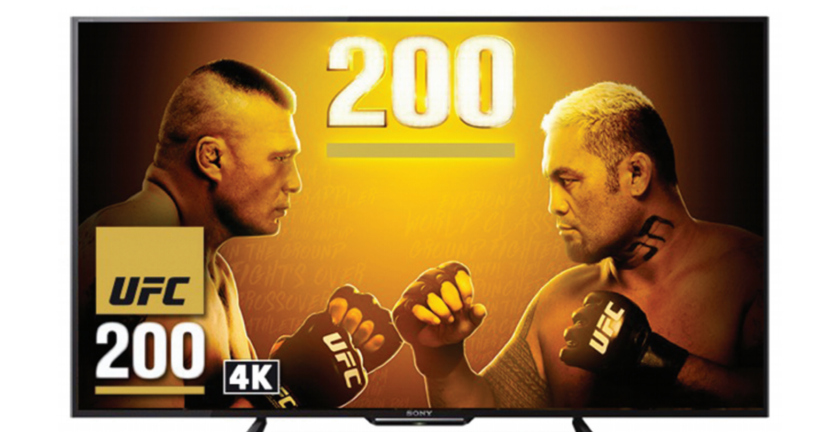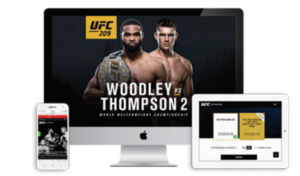Connections

M&E Journal: OTT Just Got Personal
Story Highlights
By Chris Wagner, EVP, NeuLion –
There’s nothing valuable about vanilla these days. Be it cars, smartphones, running shoes, burgers, you name it—we all now want to purchase things with our own personal flair and flavor added.
We are truly in an age where one size does not fit all and we will not simply just accept what we are given. Video services are no exception. Whether it be OTT or TV Everywhere, viewers are no longer satisfied with video delivered when and where they want to watch. They also want to choose how, and on which devices, to consume it. Going multi-screen is now a routine cost of doing business.
Here is the good news: Advanced customization technology can now deliver curated social content, custom schedules, videos and news-related content based on subscribers’ selections. It can deliver personalized content based on real-time data, using aggregated behavioral data and recommendations for monetization and merchandising.
The demand for personalization
It’s tempting to ask whether personalization really does matter so much in today’s market. It does indeed. A survey from Forrester Research in late 2016 revealed that there was a need for providers to align technology priorities to meet rising consumer expectations. When asked which technology and implementation investments were the highest priority for web and mobile initiatives, 69 percent of firms indicated that they were working on redesigning user experiences and 68 percent cited the need to deliver personalized experiences.
Content was a key component of personalization— the highest priority in fact, with 75 percent of the survey sample saying that they had already personalized content on a website. This affects how content is offered up to viewers; how they can go in and choose what they think is important to them and how that content gets created and curated on websites; how promotions are delivered; how content owners can recommend different products; how to drive requests and reminders; and what platforms to lay these out on.
There is a great example from one of our clients to show just how these elements can come together very profitably. Ultimate Fighting Championship (UFC) started life in 1993 as a professional mixed martial arts (MMA) organization and now claims to be the world’s fastest growing sports organization. UFC produces more than 40 live events annually and is the largest PPV event provider in the world, broadcasting in over 129 countries and territories, in 28 different languages, to nearly 800 million TV households worldwide.
Its flagship digital experiences are UFC Fight Pass and digital pay-per-view TV, UFC.TV, for premier events. UFC Fight Pass has three components: a live stream of 400 annual events; the largest VOD fight library of MMA content in the world and an original content business.
 Case study: UFC
Case study: UFC
Now more than ever before, having a fully-enabled delivery solution is key for UFC. The organization has gone global, being present on 17 different apps and consoles, and has a vision of being anywhere its customers want it to be.
Most importantly, UFC must understand the wants, needs and desires of every customer around the world.
This is where personalized solutions present a win-win for both the customer and provider. The customers get what they want, when they want it. As for the provider, being able to do these things also presents the chance to gain great insight including where, how and why content is consumed.
To UFC, being in a positon to better know the customer and improve the product it provides is part of a fundamental stated ambition to earn the right to keep customers’ business.
UFC constantly asks itself: What is it doing to earn this right? What content do the individual consumers want? How? When the customers enter the UFC ecosystem, what is the pathway of experience? Do they search and order content on mobile and then play it out on another device or platform? How can UFC make this pathway easier?
These facets should be universal aims for every business. What business wouldn’t want to know where and how its products are consumed? How to not only control quality and delivery of the end-product—in the form that is required by the customer — but also offer the opportunity to let customers interact with what they are watching?
To achieve this, UFC leverages the NeuLion Digital Platform to analyze three sets of data.
Watch data
Watch data helps comprehend what people watch, how much they watch and what they may be likely to watch. UFC can market to that customer a similar show or use their profile as a seed audience to target others “just like them.”
Support data
Support data allows UFC to stay on top of technical or customer service issues as well as measure feedback and opinions on content. Support data helps predict who is likely to churn out, so that they can be targeted with a retention offer.
Billing data
Billing data informs UFC of the buying habits of customers, such as when they hit spending limits that move them from one tier offering to another. From here UFC can launch campaigns to reward loyal customers, activate dormant customers, upsell or even offer companion products.
The business intelligence than can be gleaned from knowing such things is massive; and so are the potential positive business outcomes. We know having advanced viewing experiences (and personalization certainly comes into this category), simply means increased engagement, differentiation between services and the ability to unlock new revenue streams.
In addition, personalization is truly part of digital marketing’s massive shift to accountability as marketers need to drive customer growth while demonstrating a positive return on investment in campaigns. Having the ability to understand customers much better and respond to their needs —creating campaigns that are tailored by strict criteria and based on groups seeing only creative material that was relevant to them — vastly increases the chance of a response from the user.
The bottom line, both literally and metaphorically is that personalization is a key differentiator for OTT and TV Everywhere services.
—
Click here to translate this article
Click here to download the complete .PDF version of this article
Click here to download the entire Spring 2017 M&E Journal









